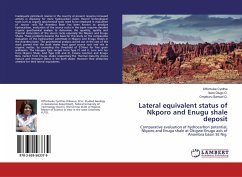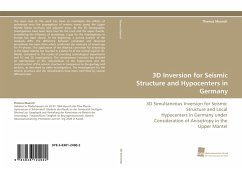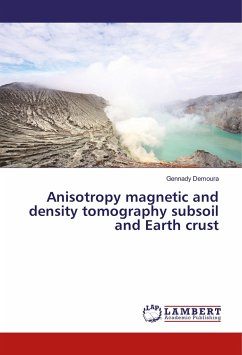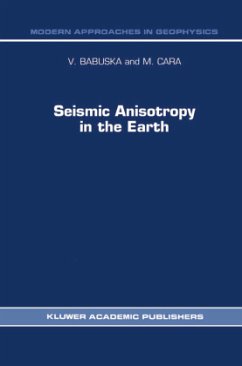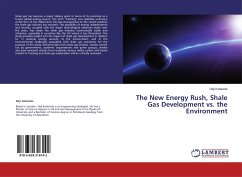
SHALE ANISOTROPY
MATHEMATICAL MODELING AND ULTRASONIC MEASUREMENT OF SHALE ANISOTROPY AND A COMPARISON OF UPSCALING METHODS FROM SONIC TO SEISMIC
Versandkostenfrei!
Versandfertig in 6-10 Tagen
45,99 €
inkl. MwSt.

PAYBACK Punkte
23 °P sammeln!
The anatomy of shale is complicated because lithological heterogeneities are present at a very wide range of scales. Both the mineral and pore space contributions to the net seismic anisotropy of a shale are still subjects for research because of the extreme range of scales involved. This research develops a quantitative approach to understanding the seismic anisotropy of shale caused by the alignment of clay minerals and pores. In other words, it answers the questions like when do the clay platelets dominate the anisotropy and when does the porosity play a role? This question is of interest f...
The anatomy of shale is complicated because
lithological heterogeneities are present at a very
wide range of scales. Both the mineral and pore
space contributions to the net seismic anisotropy of
a shale are still subjects for research because of
the extreme range of scales involved. This research
develops a quantitative approach to understanding
the seismic anisotropy of shale caused by the
alignment of clay minerals and pores. In other
words, it answers the questions like when do the
clay platelets dominate the anisotropy and when does
the porosity play a role? This question is of
interest for exploration purposes because the
presence of cracks enhances the permeability. The
answer depends upon the saturation of the pores -
water-filled vs. gas-filled. The theoretical
understanding of the effective media modeling is
used to model Barnett Shale, which is one of the
largest natural gas plays in the World. Upscaling
method based on pair correlation function
approximation, Backus, and simple averaging are
compared for more accurate upscaling estimate of
velocities at surface seismic exploration scales.
lithological heterogeneities are present at a very
wide range of scales. Both the mineral and pore
space contributions to the net seismic anisotropy of
a shale are still subjects for research because of
the extreme range of scales involved. This research
develops a quantitative approach to understanding
the seismic anisotropy of shale caused by the
alignment of clay minerals and pores. In other
words, it answers the questions like when do the
clay platelets dominate the anisotropy and when does
the porosity play a role? This question is of
interest for exploration purposes because the
presence of cracks enhances the permeability. The
answer depends upon the saturation of the pores -
water-filled vs. gas-filled. The theoretical
understanding of the effective media modeling is
used to model Barnett Shale, which is one of the
largest natural gas plays in the World. Upscaling
method based on pair correlation function
approximation, Backus, and simple averaging are
compared for more accurate upscaling estimate of
velocities at surface seismic exploration scales.



